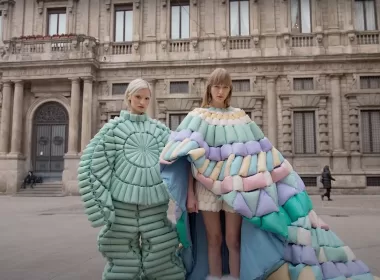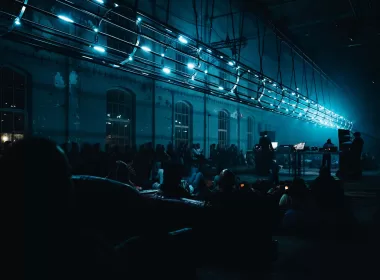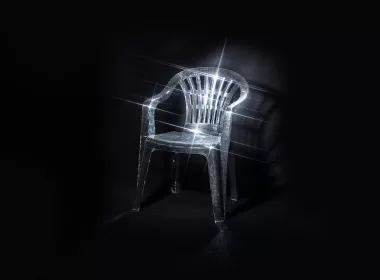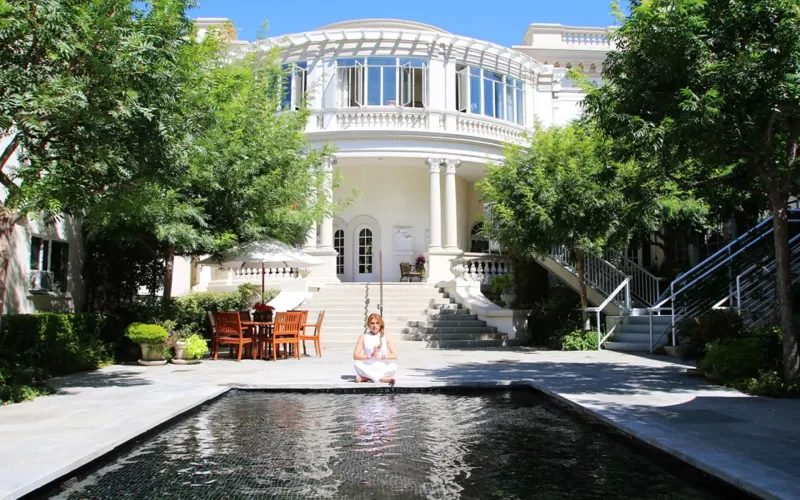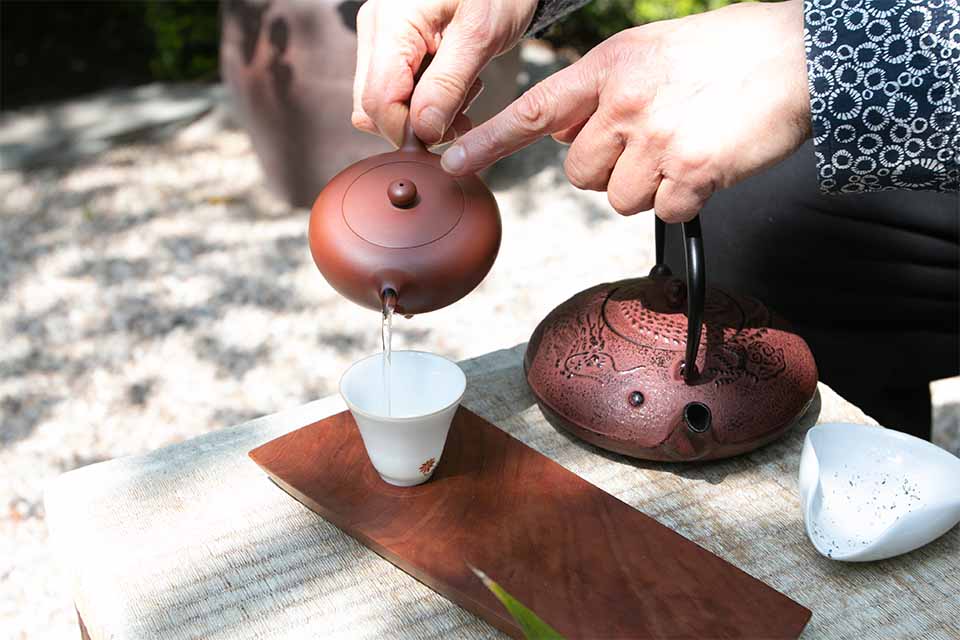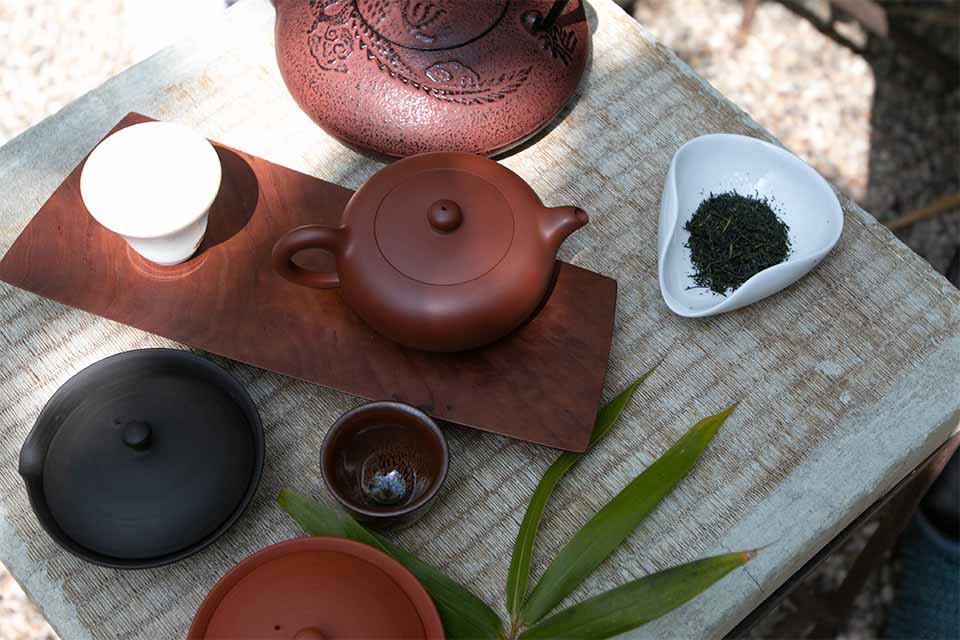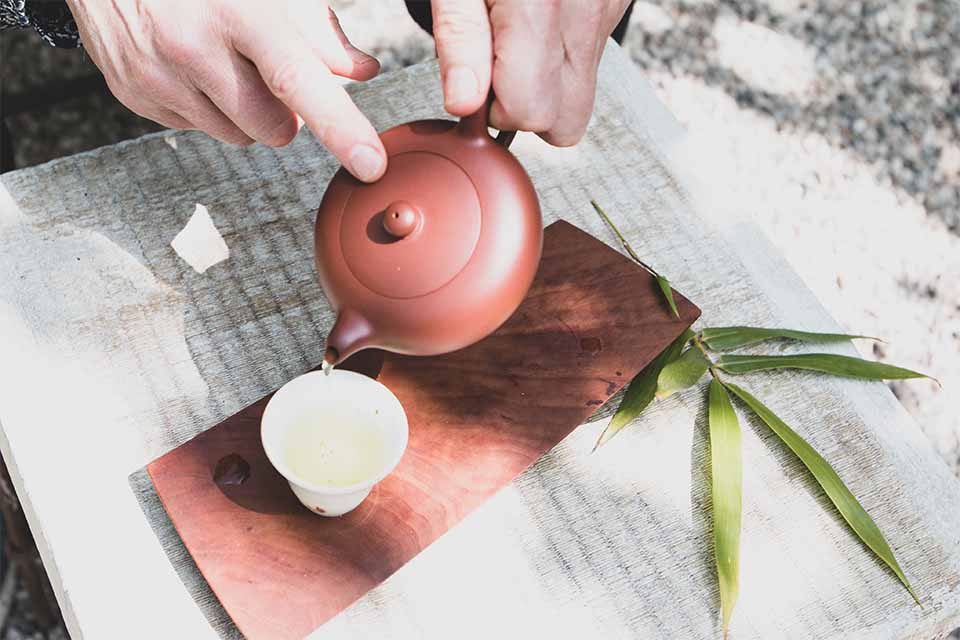Despite being surrounded by the busyness of Los Angeles, the Peace Awareness Labyrinth and Gardens (PALG) have successfully been a center of calm for the public since 2001. PALG is located in a beautiful villa that combines beaux arts style with Italian Renaissance revival architecture, which was built between 1910 and 1913 for Secundo Guasti an Italian wine merchant. The Guasti Villa is actually historic landmark #478 for the city of Los Angeles, and has a white exterior with marble accents. The villa features, as the name implies, a stone labyrinth and a meditation garden. The labyrinth is considered the centerpiece of the mansion, and is based on the one at Chartres Cathedral in France that is inspired by sacred geometry. It is unicursal, meaning there is one way in and one way out. All guests have to do is follow the path and it will lead to the center, and then follow the path out. Then down the stairs from the area the labyrinth is at is where the meditation garden is. The garden is overflowing with greenery, Japanese fountains, and lily ponds.
One of the events Peace Awareness offers is a tea ceremony called “A Way of Tea.” The purpose of this ritual is to guide participants to an inner tranquility. PALG believes that the properties of tea have a mystical ability to bring people to places of beauty within our being. They believe that it is beauty that softens hearts and makes one attentive to the voice of one’s true self. Chinese, Taiwanese, and Japanese tea practices are combined to offer participants an introduction to the world of tea. During the ceremony participants connect with space, silence, stillness, and breath.
When guests enter the mansion for the occasion, they find themselves in the ballroom, which has Carrara marble floors, a curving staircase, carved oak detailing, and a hand painted mural. Then guests are led through the left side of the home, which has been converted into a modern cafeteria for the people at the villa to use, and taken to a small nook of the house that overlooks the labyrinth and can see out to the city. There Paul Kaye, the host of “Way of Tea,” has tables arranged for guests to sit and watch as he guides them through the unique meditation.
Paul Kaye, what is the Peace Awareness Labyrinth and Gardens, and what is your role here?
Peace Awareness Labyrinth and Gardens, we call it an oasis of peace in the heart of the city – the heart of a bustling city actually. We bought the mansion in 1974, so this year we are celebrating our 50th anniversary. It started as a spiritual community – it still is a spiritual community – so we have people living here, we have people working here, and we have events here as well. It’s multi-purpose. People can stay for the weekend, they can stay for the week. The organization was founded by John Roger, it’s part of an organization called the Movement of Spiritual Inner Awareness. John Roger passed away in 2014, he was a spiritual teacher. He was the reason why I moved to Los Angeles in 1976. I wanted to come and work for him. I was born and raised in London, England. I was trained as an accountant. The equivalent of a CPA in England is called a chartered accountant. I thought I could help with the financial records. The organization was in its nascent form at that time, it’s now world wide. We are very small with about 3,000 people involved globally, but just enough to keep things interesting. Eventually I became president of the organization in 1989. Administration and personnel, and legalities and finances are always an ongoing thing, but my love is the ancient mysteries and teachings of old, and philosophy and spiritual teaching. Whether it is the Indian teachings of the Upanishads, the Chinese teaching of the Dao, the Sufi teachings of the Middle East, the ancient Greek mysteries, the Kabbalah, or the sound current of God; all of those things are interesting to me. Yet, I found a very deep resonance with serving tea at some point. I have a great affinity for Japanese culture and that led me to tea. I realized tea was a complete world. What is seen here is my take on tea.
How long have you been hosting this tea ceremony? Why did it start?
I’ve been hosting this for three years. It started during COVID. My prime interest was with sound, I had a lot of instruments. Every day, because we were in lockdown and people wanted to connect, I would record one of the instruments in my collections. I would do like ten or fifteen minutes [playing an instrument]. After about thirty days I ran out of instruments, and I thought, what am I going to talk about? Since I was interested in tea at that point I began featuring some of the teas I had in my collection. Due to it being a presentation I had to get more interested in it, and then I got deeper into it. Then when we came out of lockdown I thought it would be great to do a tea ceremony here. Then an influencer came along and it really took off. It made me realize a lot of people are interested in tea. I love serving tea. Who knew?!
The big thing that I emphasize is just being present. A way to do that is to just let the tea coat the tongue, feel the after notes, and the aroma. The sensual experience of it.
It is very different to hear about a tea ceremony being focused on meditation and spirituality these days, because it is more common to view them in a tourism aspect. How important is it for people to experience this type of ritual?
In our busy lives I think it’s extremely important. That’s one of the reasons I do this. I want to provide a balm or salve for people. Pretty much anybody that comes to a tea has something they want to let go of. Since we are Peace Awareness, tea lends itself very well to the peace experience. I would say that everybody – the four, five hundred people I’ve served tea to – 99.9% of them experience peace when they leave here. Tea does lend itself well, and I do give people meditative moments where they can close their eyes. I like to start out with meditation, so people have a reference point, and they find their mind is very busy, or they find themselves a little agitated, or they have the world on their back. As the tea progresses they’ll start becoming calmer and calmer, and finally they’ll just leave here and they’ll feel very peaceful.
Throughout the event you speak of the beauty of the utensils from the small cups to the measuring cups used to prepare the tea. Is it important to notice the beauty in these things that are easy to overlook?
Very much so. In fact, in the Japanese tea ceremony – it’s not called a tea ceremony in Japanese, it is called chado: the way of tea. That’s why I call mine “A Way of Tea,” not “The Way of Tea.” It’s very individual, the way I’ve put it together. In the Japanese ceremony it is actually part of the ceremony that you pick up your cup – the bowl in this case – and you look at it and you turn it over, you look to the left, you look to the right. They make you look at it. They consider very much noticing what’s around you. I don’t emphasize that, I hope the pieces will speak for themselves. The big thing that I emphasize is just being present. A way to do that is to just let the tea coat the tongue, feel the after notes, and the aroma. The sensual experience of it.
Can you explain the part of the ceremony where crystals are given to participants to focus on?
I like to reset people when they come in. Crystals are amplifiers of energy, and our bodies are actually made of liquid crystal. There is a lot of resonance between crystals and our bodies. If we can view a crystal with positive intent, or positive vibrations, or love then that will be amplified and amplified in our bodies. That is why crystals are so useful. Now, I only do the crystals after participants let go of what is disturbing them. In the ceremony after we take it out of our bodies and place it in a little bowl in which I burn some incense. We just watch our anxieties, our tensions, just go out in smoke. At that point is where I do the crystals. Again, all of this with the intention to reset people, and move them into an altered space. A natural altered space – not drug-induced altered space – where they can find a degree of peace. I have a tuning fork called a crystal tuner. This is a high frequency tuning fork that amplifies the crystal, amplifying the positive intent. Striking the crystal with the tuner increases the vibration, which will increase the vibration in the body. I have people put the crystal in their left hand because the left hand is attributed to receiving. When I strike the crystal then they close their hand over it and then embody this new positive vibration. I have them meditate for a minute or two to feel as this new vibration enters their body.
Human beings are tuning instruments with the ability to tune into any vibration, level of consciousness, or vibration
Throughout the event, participants are guided to meditate on space, silence, stillness, and breath, eventually manifesting blessings. Why is this done slowly throughout the event?
I shift things around given who’s present and what is present in the room. My go-to frame work is to have moments of silence because I feel that tea has the capacity to bring us in a meditative state. People who are not skilled in meditation, or come with a very active mind, find themselves having a stillness. Stillness is a higher quality that happens for people – I don’t emphasize it as much as finding a meditative place. I like having people focus on one conscious breath in, one conscious breath out. I do this so people who haven’t meditated can meditate without it being forced. I also focus on spaciousness – just not in a meditative state with eyes closed. Just to be aware of space around us and in us. All this creates a shift from a beta wave state – which is a highly focused, almost hyper-aware state – to an alpha state, which is a wider awareness.
Why is it important for people to manifest blessings into their lives?
We are not manifesting blessings, the blessings already are. We have a phrase: Barush Bashan. It is a Sufi Hebriaic saying, meaning the blessings already are. The blessings are present, but how do we tune into the blessings that we want? I can say there is classical music playing in a room, but someone else says they don’t hear it. I can bring in a radio and dial into the classical music station. The music is not in the radio, the radio is just a tuning device. Human beings are tuning instruments with the ability to tune into any vibration, level of consciousness, or vibration. We have in our mind a blessing that we wish and we just dial it in, we tune into it. Ask for the highest good, we can’t impose on the blessing of the divine. We can receive, but we can’t impose. Maybe it is the highest good to have a blessing of joy, maybe it is a blessing of calmness.
What type of person should go to this event, and what should people attending this event be expecting?
Anybody can drink tea. Anybody interested in drinking tea, and having the experience of being with like-minded people. What I find interesting about tea is that lovely people gather for it. I can’t say that’s true for all the events – not that people are bad or anything. The tea, however, is always a great feeling of closeness. A tea gathering always creates a loving community. If a person is for love, community, and joy – most of all peace – a break from the world, a mini vacation, then I recommend a tea gathering of any sort.
Do you hope this to be a pause in city life, and do you see this influencing life in Los Angeles?
I think that we are all vibratory beings. If you think of a still pond and you throw a pebble into it, even though that pond is very small, ripples will be quite obvious. Even though it seems like a big city, a big world, it seems like we don’t matter but we really do. We are all creating those ripples. Those ripples really touch people. A gesture of compassion, a gesture of loving, a smile. All of those things create ripples. Those ripples can be harmonious and will join with the other person’s disharmonious ripples changing it into harmonious ripples. With enough people doing that then we can change the world. That’s not really the goal to change the world, the goal is to change ourselves and reach a peaceful place. Doing that gives us a peaceful vibration that will radiate out.



